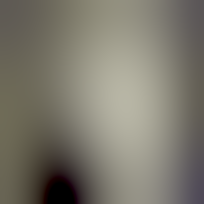mirror of
https://github.com/superseriousbusiness/gotosocial
synced 2025-01-25 11:05:07 +00:00
* start fixing up tests * fix up tests + automate with drone * fiddle with linting * messing about with drone.yml * some more fiddling * hmmm * add cache * add vendor directory * verbose * ci updates * update some little things * update sig
4 KiB
4 KiB
go-blurhash 



go-blurhash is a pure Go implementation of the BlurHash algorithm, which is used by Mastodon an other Fediverse software to implement a swift way of preloading placeholder images as well as hiding sensitive media. Read more about it here.
tl;dr: BlurHash is a compact representation of a placeholder for an image.
This library allows generating the BlurHash of a given image, as well as reconstructing a blurred version with specified dimensions from a given BlurHash.
This library is based on the following reference implementations:
- Encoder: https://github.com/woltapp/blurhash/blob/master/C (C)
- Deocder: https://github.com/woltapp/blurhash/blob/master/TypeScript (TypeScript)
BlurHash is written by Dag Ågren / Wolt.
| Before | After | |
|---|---|---|
| Image |  |
"LFE.@D9F01_2%L%MIVD*9Goe-;WB" |
| Hash | "LFE.@D9F01_2%L%MIVD*9Goe-;WB" |  |
Installation
From source
go get -u github.com/buckket/go-blurhash
Usage
go-blurhash exports three functions:
func blurhash.Encode(xComponents, yComponents int, rgba image.Image) (string, error)
func blurhash.Decode(hash string, width, height, punch int) (image.Image, error)
func blurhash.Components(hash string) (xComponents, yComponents int, err error)
Here’s a simple demonstration. Check pkg.go.dev for the full documentation.
package main
import (
"fmt"
"github.com/buckket/go-blurhash"
"image/png"
"os"
)
func main() {
// Generate the BlurHash for a given image
imageFile, _ := os.Open("test.png")
loadedImage, err := png.Decode(imageFile)
str, _ := blurhash.Encode(4, 3, loadedImage)
if err != nil {
// Handle errors
}
fmt.Printf("Hash: %s\n", str)
// Generate an image for a given BlurHash
// Width will be 300px and Height will be 500px
// Punch specifies the contrasts and defaults to 1
img, err := blurhash.Decode(str, 300, 500, 1)
if err != nil {
// Handle errors
}
f, _ := os.Create("test_blur.png")
_ = png.Encode(f, img)
// Get the x and y components used for encoding a given BlurHash
x, y, err := blurhash.Components("LFE.@D9F01_2%L%MIVD*9Goe-;WB")
if err != nil {
// Handle errors
}
fmt.Printf("xComponents: %d, yComponents: %d", x, y)
}
Limitations
- Presumably a bit slower than the C implementation (TODO: Benchmarks)
Notes
- As mentioned here, it’s best to generate very small images (~32x32px) via BlurHash and scale them up to the desired dimensions afterwards for optimal performance.
- Since #2 we diverted from the reference implementation by memorizing sRGBtoLinear values, thus increasing encoding speed at the cost of higher memory usage.
- Starting with v1.1.0 the signature of blurhash.Encode() has changed slightly (see #3).
License
GNU GPLv3+